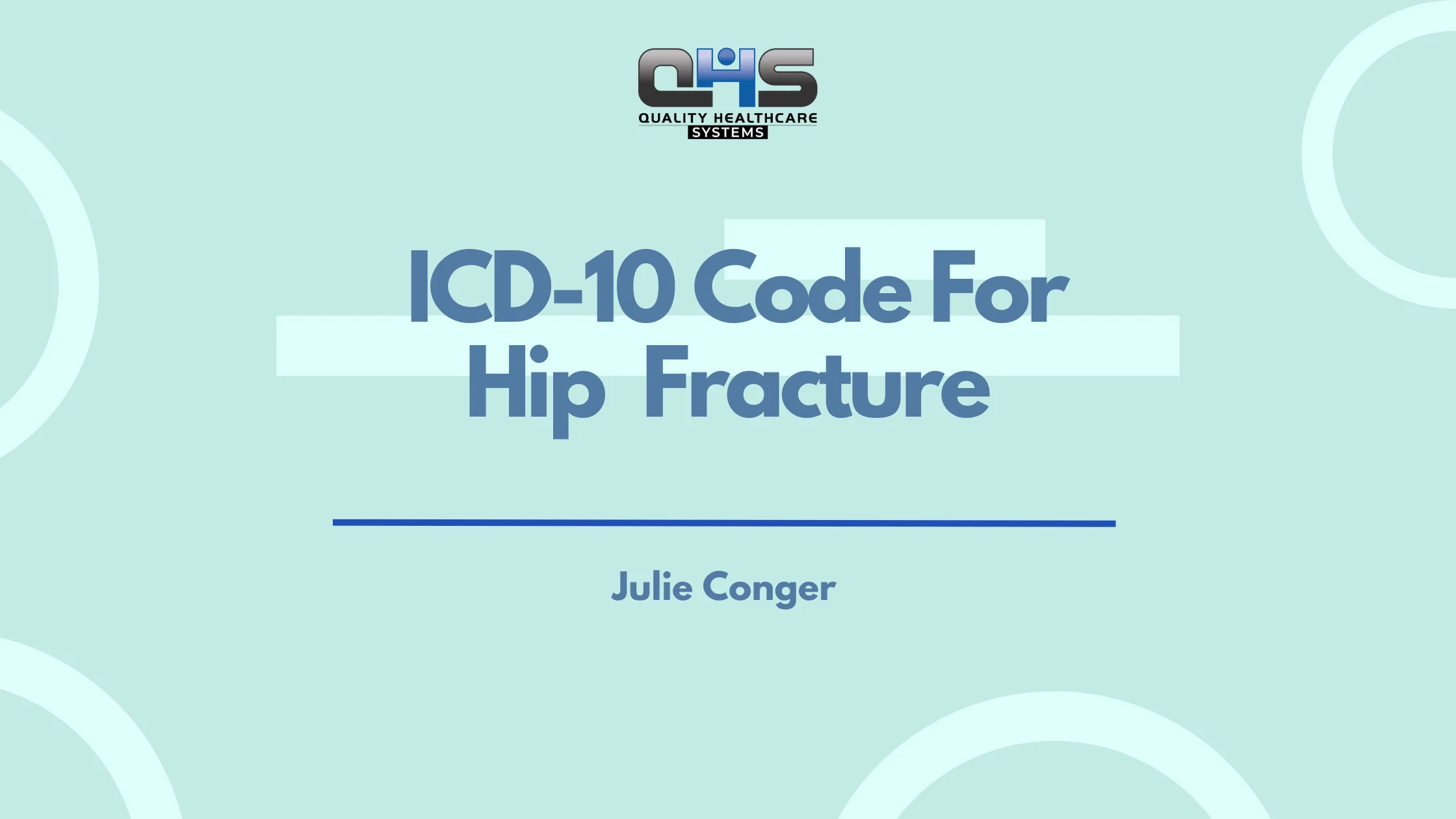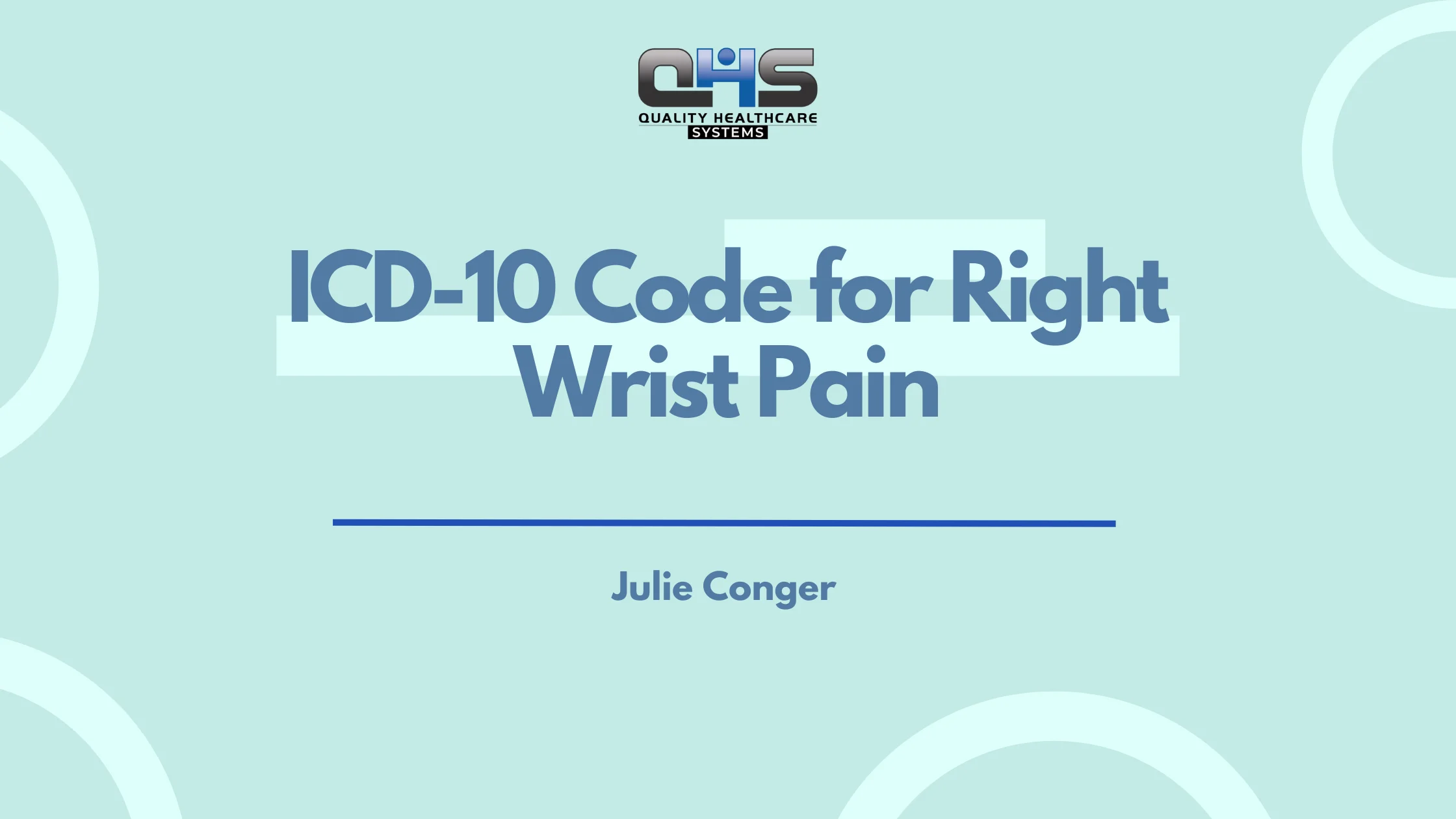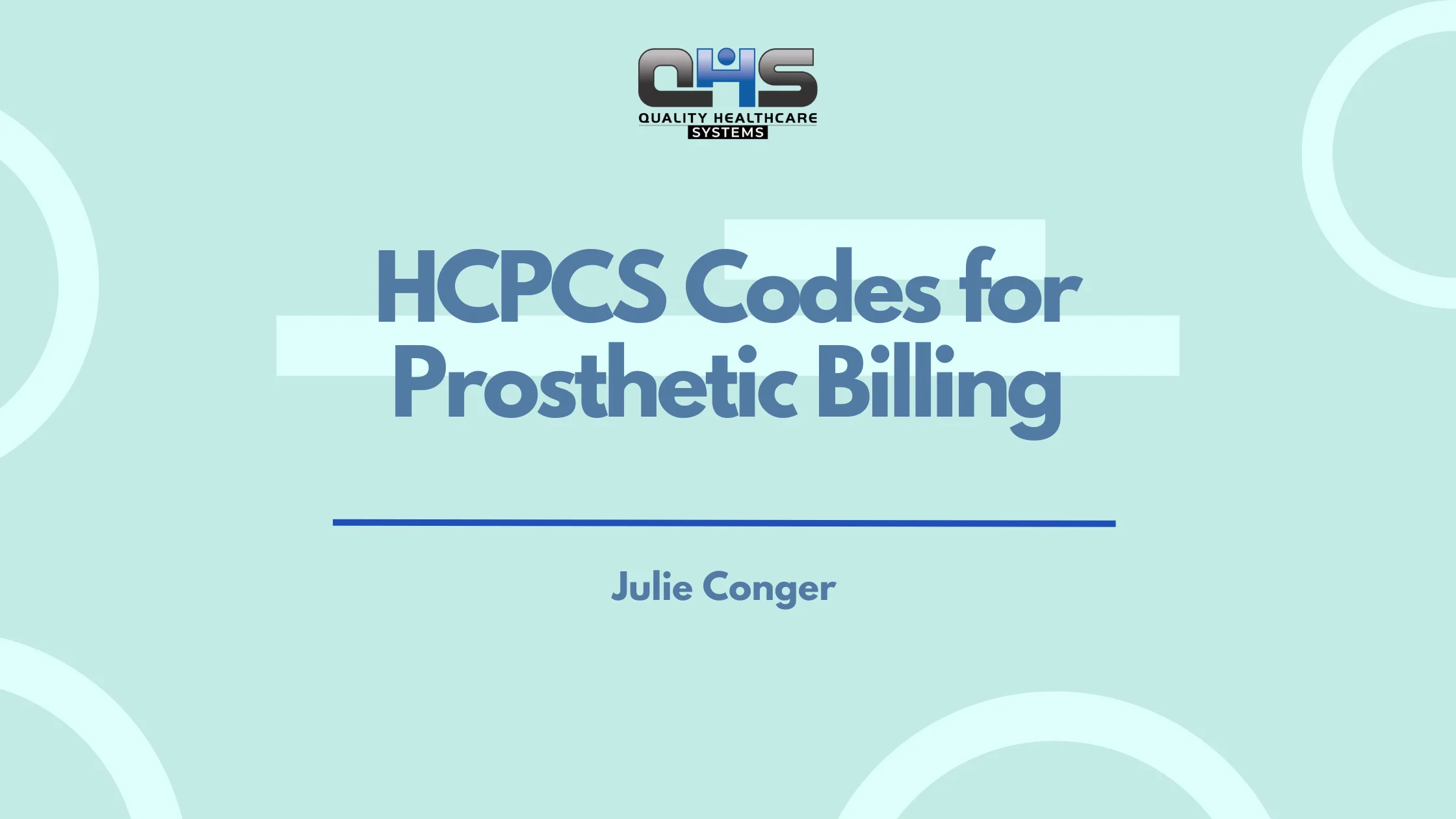Looking for the correct ICD-10 code for hip fracture? Whether you’re a healthcare provider, medical coder, or billing specialist, accurate coding is essential for diagnosis, treatment documentation, and insurance claims. The ICD code for hip fracture isn’t one-size-fits-all — it depends on the location of the fracture, whether it’s on the left or right side, and the stage of care.
In this guide, we’ll break down the ICD-10 codes for hip fractures, and more. We’ll also cover documentation tips, billing guidelines, and answer common questions to help you code hip fractures with confidence.
What Is the ICD-10 Code for Hip Fracture?
The ICD-10 code for hip fracture depends on the type of femur fracture, its anatomical location (e.g., neck, intertrochanteric, subtrochanteric), the side of the body (left or right), and the stage of treatment (initial, subsequent, or sequela).
Hip fractures fall under the S72 category of ICD-10-CM codes. These codes are used to identify different types of proximal femur fractures, and they vary based on location and injury complexity. Below are the primary base codes:
| ICD-10 Code | Description |
| S72.0 | Fracture of neck of femur (commonly referred to as femoral neck fracture) |
| S72.1 | Pertrochanteric fracture of femur (also known as intertrochanteric fracture) |
| S72.2 | Subtrochanteric fracture of femur |
| S72.3 – S72.9 | Other and unspecified femur fractures, including shaft, distal, and open fractures |
Each base code is expanded using 7th character extensions to capture:
- Laterality – whether the fracture occurred on the right or left hip
- Episode of care – such as initial encounter, subsequent encounter for routine healing, delayed healing, nonunion, malunion
- Fracture complexity – open vs. closed fracture
These specifics help medical billers, coders, and physicians ensure accurate diagnosis and insurance reimbursement. Up next, we’ll break down each category with detailed tables listing all ICD-10 hip fracture codes based on location and encounter type.
ICD-10 Code Table for Hip Fractures
| ICD-10 Code | Description | Laterality | Episode of Care | Clinical Notes |
| S72.001A | Fracture of unspecified part of neck of right femur, initial encounter for closed fracture | Right | Initial | Often used when detailed imaging is pending |
| S72.002A | Fracture of unspecified part of neck of left femur, initial encounter for closed fracture | Left | Initial | Common in elderly with falls |
| S72.031A | Displaced fracture of right femoral neck, initial encounter | Right | Initial | Requires surgical fixation |
| S72.032A | Displaced fracture of left femoral neck, initial encounter | Left | Initial | High risk of avascular necrosis |
| S72.041A | Nondisplaced fracture of right femoral neck, initial encounter | Right | Initial | May be treated conservatively |
| S72.042A | Nondisplaced fracture of left femoral neck, initial encounter | Left | Initial | Less likely to require total hip replacement |
| S72.101A | Fracture of right intertrochanteric region of femur, initial encounter | Right | Initial | High incidence in osteoporotic patients |
| S72.102A | Fracture of left intertrochanteric region of femur, initial encounter | Left | Initial | Risk of blood loss and surgical complications |
| S72.201A | Fracture of subtrochanteric region of right femur, initial encounter | Right | Initial | Can extend to femoral shaft |
| S72.202A | Fracture of subtrochanteric region of left femur, initial encounter | Left | Initial | Treated with intramedullary nailing |
⚠️ Note: For subsequent encounters (e.g., routine healing, delayed healing, nonunion, or malunion), replace the seventh character (e.g., A) with:
- D – Subsequent encounter, routine healing
- G – Subsequent encounter, delayed healing
- K – Subsequent encounter, nonunion
- P – Subsequent encounter, malunion
- S – Sequela (complications from previous injury)
What Are the Common Types of Hip Fractures?
| Fracture Type | Typical ICD-10 Code Prefix | Location | Clinical Impact |
| Femoral neck fracture | S72.0 | Just below the femoral head | High risk of AVN and impaired mobility |
| Intertrochanteric fracture | S72.1 | Between greater and lesser trochanters | Most common in elderly patients |
| Subtrochanteric fracture | S72.2 | Just below the trochanters | Often caused by trauma or stress fractures |
| Shaft of femur fracture | S72.3 | Mid-section of the femur | Associated with high-energy trauma |
| Unspecified fracture of femur | S72.9 | Any non-classified hip region | Used when diagnosis is uncertain or undocumented |
Causes of Hip Fracture and Associated ICD-10 Codes
| Cause | Associated ICD-10 Code | Notes |
| Fall from standing | W19.XXXA | Most common cause in elderly adults |
| Osteoporosis | M81.0 | Reduces bone density, increasing fracture risk |
| High-impact trauma (e.g., motor accident) | V87.7XXA | Common in younger individuals |
| Pathologic fracture due to cancer | M84.5XXA | Indicates malignancy-weakened bone |
| Stress fracture from overuse | M84.3XXA | Common in athletes or military recruits |
How Is a Hip Fracture Diagnosed?
Healthcare professionals typically follow these steps to confirm a hip fracture diagnosis:
- Physical Examination – Shortened leg, rotated outward
- X-rays – Standard diagnostic tool
- CT Scan or MRI – Used if X-ray is inconclusive
- Bone Density Test (DEXA) – For evaluating osteoporosis
Diagnosis is followed by assigning a specific ICD-10 code like S72.041A, depending on the imaging and clinical presentation.
Treatment Options for Hip Fractures (By ICD-10 Code)
| ICD-10 Code | Treatment | Common Procedures | Medications |
| S72.031A | Surgery (hip pinning or replacement) | Open Reduction and Internal Fixation (ORIF) | Analgesics, anticoagulants |
| S72.101A | Surgery, post-op rehab | Intramedullary nail | Pain management, antibiotics |
| S72.042A | Conservative or surgical | Bed rest, physical therapy | Calcium and Vitamin D |
| M81.0 (Osteoporosis) | Bone strengthening | Bisphosphonates | Alendronate, Risedronate |
ICD-10 Coding Guidelines for Hip Fracture (2025 CMS-Compliant)
ICD-10 coding for hip fracture requires accurate classification of fracture type, laterality, episode of care, and healing stage. Using the correct seventh character is critical for billing, Medicare reimbursement, and claim approval for hip and femoral injuries.
1. Use the Most Specific Hip Fracture Diagnosis Code
When coding hip fractures in ICD-10, select the most specific diagnosis code that reflects the fracture location, side of the body (left or right), and type of encounter (initial, follow-up, or sequela).
ICD-10-CM codes for hip fractures fall under the S72 code range, which includes:
| Base Code | Description |
| S72.0 | Fracture of neck of femur (femoral neck) |
| S72.1 | Pertrochanteric fracture |
| S72.2 | Subtrochanteric fracture |
| S72.3–S72.9 | Other femur fractures (e.g., shaft, distal end, unspecified) |
Each of these has multiple child codes for:
- Right vs. Left
- Closed vs. Open fracture
- Encounter type (A, D, G, K, P, S)
Example:Right femoral neck fracture, closed, initial encounter:
S72.001A
2. Always Use the Correct Seventh Character for Episode of Care
ICD-10-CM requires a seventh character to define the episode of care and healing stage for hip fracture diagnoses. It ensures accuracy in orthopedic billing, trauma coding, and post-surgical reimbursement.
Here’s a complete breakdown of all seventh character options and when to use them:
| Seventh Character | Meaning | When to Use It |
| A | Initial encounter | Active treatment phase (e.g., surgery, ER care) |
| D | Subsequent encounter, routine healing | Standard follow-up during normal recovery |
| G | Subsequent encounter, delayed healing | Recovery is slower than expected |
| K | Subsequent encounter, nonunion | Fracture failed to unite |
| P | Subsequent encounter, malunion | Fracture healed abnormally |
| S | Sequela | Residuals after fracture has healed (e.g., chronic pain, limp) |
If the base code is 5 characters (e.g., S72.0), insert a placeholder “X” before the 7th character:
Example: S72.031A (closed fracture, left femoral neck, initial care)
3. Pathologic Hip Fractures Must Use M84-Series Codes
If a hip fracture is caused by an underlying condition like osteoporosis or cancer, ICD-10 requires using M84.4 to M84.6 codes instead of traumatic S72 series codes.
Pathologic fracture coding must reflect:
- The affected bone and side (e.g., left femur)
- The underlying cause (e.g., neoplastic disease, osteoporosis)
- The same seventh character structure
| ICD-10 Code | Description |
| M84.45XA | Pathologic fracture in right femur due to osteoporosis, initial encounter |
| M84.551A | Pathologic fracture in left femur in neoplastic disease, initial |
| M84.652P | Malunion of pathologic fracture, left femur, subsequent |
Always code the cause of the pathologic fracture in addition to the fracture itself (e.g., osteoporosis: M81.0).
🧾 4. Coding Sequela and Post-Surgical Complications of Hip Fractures
When coding complications or long-term effects of hip fractures, use the sequela seventh character (S) with the original fracture code, and report any related symptoms or residual conditions separately.
Examples of sequela include:
- Post-fracture arthritis
- Chronic hip pain
- Limping or stiffness
Example Coding:
S72.001S – Residual pain from a previous femoral neck fracture
M25.551 – Pain in right hip
5. Avoid These Common ICD-10 Coding Errors for Hip Fractures
Incorrect ICD-10 coding for hip fractures can lead to denied claims, compliance issues, and delayed reimbursement. Coders must avoid common documentation and sequencing errors.
| Error | Why It’s Problematic |
| Missing 7th character | Makes the code invalid or incomplete |
| Using trauma code for pathologic fracture | Misrepresents the cause of injury |
| No laterality specified | Increases audit risk |
| Not coding delayed/nonunion/malunion | Underrepresents the patient’s actual status |
| No underlying condition for M84 codes | Fails to justify pathologic fracture diagnosis |
6. Official References for 2025 ICD-10 Hip Fracture Coding
To remain compliant and updated, coders must follow official ICD-10-CM guidelines, CMS updates, and payer-specific rules when coding hip fractures.
Trusted reference tools:
- ICD-10-CM Official Guidelines (CMS.gov)
- WHO ICD Coding Resources
- AAPC Orthopedic Coding Manuals
- AHIMA Clinical Documentation Guidance
- Payer manuals (Medicare Part B, Medicaid MCOs, private insurers)
ICD-10 Coding Guidelines for Hip Fracture
ICD-10 coding for hip fractures requires precise documentation, including laterality, encounter type, and healing status. Use specific fracture codes like S72.0–S72.2 and always apply the correct seventh character to ensure accurate reimbursement and clean claims submission.
✅ 1. Use the Most Specific Code Available
Always choose the most detailed ICD-10 code that matches the documentation. This includes the exact type of hip fracture (e.g., neck of femur, pertrochanteric), laterality (left, right, unspecified), and whether it’s an initial or follow-up visit.
For example:
- S72.001A – Unspecified fracture of neck of right femur, initial encounter
- S72.102D – Displaced fracture of left femoral neck, subsequent encounter for routine healing
Using unspecified codes (e.g., S72.009A) can lead to denied claims or delayed reimbursement. Coders should always refer to physician documentation for precision.
✅ 2. Seventh Character: Episode of Care & Healing Status
Key tip: Every hip fracture code under S72.0–S72.2 must include a seventh character to represent the encounter phase or healing status.
| Seventh Character | Description |
| A | Initial encounter (active treatment phase) |
| D | Subsequent encounter (routine healing) |
| G | Subsequent encounter (delayed healing) |
| K | Subsequent encounter (nonunion) |
| P | Subsequent encounter (malunion) |
| S | Sequela (e.g., complications from prior fracture) |
Always place an “X” as a placeholder if needed to position the seventh character correctly (e.g., S72.001A, S72.101G).
✅ 3. Coding Pathologic Hip Fractures
If the fracture is not due to trauma but caused by underlying conditions like osteoporosis or cancer, use M84.4–M84.6.
Examples:
- M84.451A – Pathologic fracture in the right femur, initial encounter
- M80.051D – Age-related osteoporosis with current pathological fracture, left femur, subsequent encounter
Don’t mix traumatic codes (S72) with pathological codes (M84). Use the correct category based on physician notes and diagnostic reports.
✅ 4. Coding Sequelae and Post-Fracture Complications
When the patient is being seen for residual effects after the initial injury has healed, assign the seventh character S (sequela).
Example:
- S72.001S – Unspecified fracture of neck of right femur, sequela
Then, code the residual condition (e.g., limping, pain) as the primary diagnosis and the fracture as secondary.
Always document underlying conditions and use combination codes if complications like malunion or nonunion are involved.
✅ 5. Reference ICD-10 Official Coding Guidelines
To stay compliant:
- Refer to the ICD-10-CM Official Guidelines for Coding and Reporting (CMS & NCHS)
- Consult WHO ICD-10 Volume 1 & 2
- Use coding tools like Encoder Pro or CMS Lookup Tools
Staying updated helps reduce errors and improves claims accuracy, compliance, and audit protection.
How ICD-10 Codes for Hip Fracture Affect Billing
Accurate ICD-10 coding impacts both clinical documentation and insurance reimbursement. Common billing considerations:
- Claims with unspecified codes (e.g., S72.00XA) may be denied if not justified with documentation.
- Initial encounters (A) are used for active treatment (e.g., surgery), while subsequent (D) is for follow-ups.
- Bundled services must follow CMS and payer-specific policies, especially in orthopedic surgeries.
Frequently Asked Questions
What is the main ICD-10 code for hip fracture?
The primary code for a generic hip fracture is S72.0, but more specific codes like S72.031A or S72.101A should be used based on imaging and laterality.
Do all hip fractures require surgery?
Most do, especially displaced fractures. Nondisplaced or stable fractures may be treated conservatively depending on the patient’s health.
What does the seventh character in ICD-10 codes mean?
It denotes the episode of care:
- A – Initial encounter
- D – Routine healing
- G – Delayed healing
- K – Nonunion
- P – Malunion
- S – Sequela
Can osteoporosis be coded with hip fractures?
Yes. If osteoporosis contributed to the fracture, include M81.0 or relevant pathologic fracture codes alongside the primary injury code.





